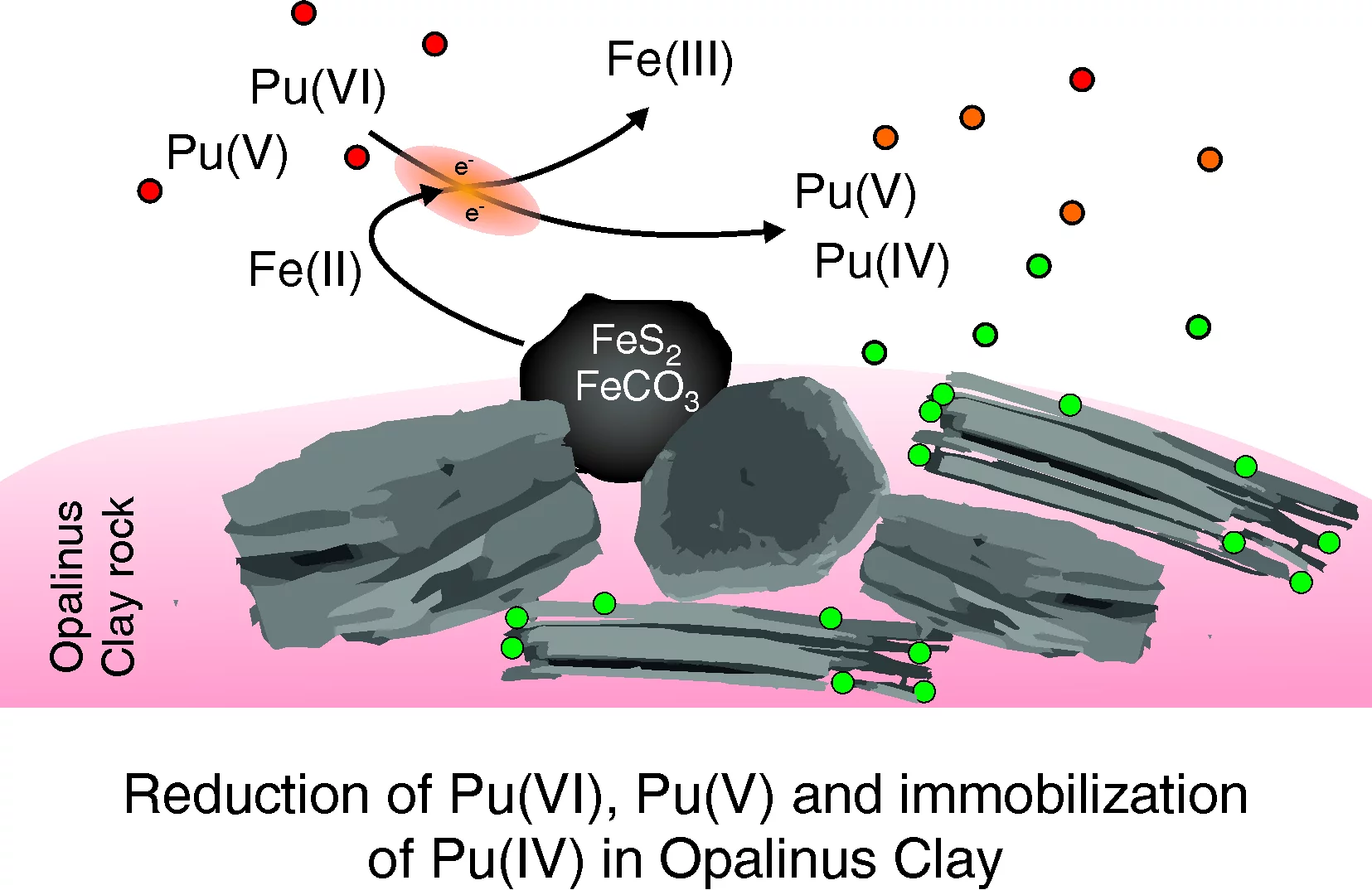Natural geological and engineered barriers play a key role in protecting the environment and the anthroposphere from the hazardous impact of deposited waste or spreading contaminants. Such natural geological and engineered barrier materials are commonly complex and heterogeneous. In-situ multimodal microscopic studies under conditions relevant to deep geological formations are crucial to identify the reactive components and reaction pathways or to validate proposed mechanisms. The present study demonstrated that a simplistic description by a sole reactive component is not an adequate representation of the geochemical reactivity responsible for the immobilization of Pu(V,VI) within an Opalinus Clay barrier. Plutonium plays an important role within nuclear waste materials because of its long half-life and high radiotoxicity. The aim of this study was to investigate with high spatial resolution the reactivity of the more oxidized forms of Pu(V,VI) within Opalinus Clay (OPA) rock, a heterogeneous, natural argillaceous rock considered as a potential repository host. A combination of synchrotron based X-ray microprobe and bulk techniques was used to study the spatial distribution and molecular speciation of Pu within OPA after diffusion and sorption processes. Microscopic chemical images revealed a pronounced impact of geochemical heterogeneities concerning the reactivity of the natural barrier material. Spatially resolved X-ray absorption spectroscopy documented a reduction of the highly soluble Pu(V,VI) to the less mobile Pu(IV) within the argillaceous rock material, while bulk investigations showed second-shell scattering contributions, indicating an inner-sphere sorption of Pu on OPA components. Microdiffraction imaging identified the clay mineral kaolinite to play a key role in the immobilization of the reduced Pu. The findings provide strong evidence that reduction and immobilization do not occur as linked processes on a single reactive phase but as decoupled, subsequent, and spatially separated reactions involving different phases of the OPA.
The present study documents in a persuasive manner that spatially resolved multimodal investigations on intact, undisturbed systems are absolutely essential to ascertain the geochemical reactivity for relevant geochemical conditions and settings. In addition to providing essential information related to the safety assessment of nuclear waste disposal concepts, the presented observations contribute to advance our understanding of (redox-sensitive) radionuclide transport in the geosphere in general.
Read the full story
Geochemical Interactions of Plutonium(VI) with Opalinus Clay Studied by Spatially Resolved Synchrotron Radiation TechniquesU. Kaplan, S. Amayri, D.R. Fröhlich, J. Drebert, D. Grolimund, C. Borca, and T. Reich
Environmental Science abd Technology, 51, Pages 7892-7902, published online: 30 May 2017
DOI: 10.1021/acs.est.6b06528
Contact
Dr Daniel GrolimundLaboratory for Synchrotron Radiation and Femtochemistry
Swiss Light Source, Paul Scherrer Intitute
5232 Villigen-PSI, Switzerland
Prof. Tobias Reich
Institute of Nuclear Chemistry
Johannes Gutenberg - University Mainz
D-55128 Mainz, Germany
